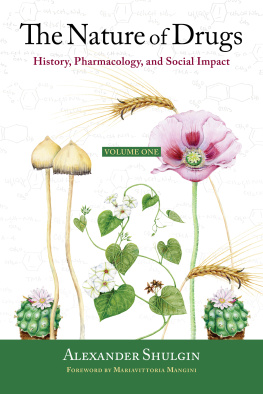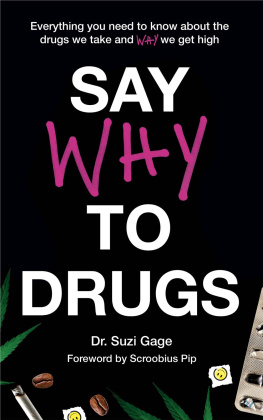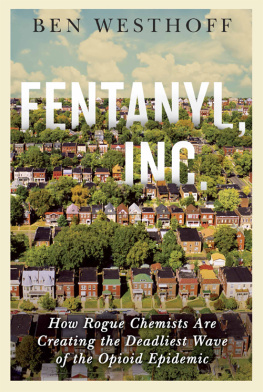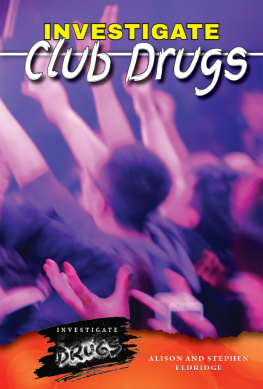Throughout this book I have made all efforts to anonymize sources, especially for those who have requested it. Where I have quoted material from online bulletin boards such as Erowid, I have used the posters original names and citations as they appear online.
List of Acronyms
Advanced Research Projects Agency Network (ARPANET)
Advisory Council on Misuse of Drugs (ACMD)
Chemical Abstracts Service (CAS)
Defence of the Realm Act (DORA)
Drug Enforcement Administration (DEA)
European Monitoring Centre for Drugs and Drug Addiction (EMCDDA)
Forensic Science Service (FSS)
Home Affairs Select Committee (HASC)
Independent Scientific Committee on Drugs (ISCD)
London Toxicology Group (LTG)
National Security Agency (NSA)
Research Chemical Mailing List (RCML)
Serious Organised Crime Agency (SOCA)
Temporary Class Drug Order (TCDO)
United Nations Office on Drugs and Crime (UNODC)
Prologue
Contemporary Chemical Culture
In 2011 forty-nine brand new psychoactive drugs were invented and advertised for sale on the internet, from which they were bought perfectly legally by curious consumers. In 2012, fifty-seven new drugs could be found for sale online. Their dosages were not always clearly specified, and were sometimes far tinier than the recreational drugs people were used to taking; their effects were undocumented and yet no law could prevent their sale. Just over a decade before, no new psychoactive drugs had been available in this way. These were not the drugs like heroin, cocaine and Ecstasy that people had used for years. Their names were baffling lists of numbers and letters, such as 6-APB, 5-MeO-DMT, 3-MeO-PCP, and made them sound more like laboratory supplies than recreational drugs. But they were being taken by ordinary people, and global discussions about their effects were going on as blatantly as their sale.
Like nearly every other industry, the drugs market has been revolutionized by the web. For a growing number of people it is now the first place they look when trying to source recreational drugs or information about them especially when faced with the rapid and baffling proliferation of new compounds. Chemists, consumers and criminals all use the internet to share vast amounts of information and exploit globalized manufacturing possibilities. Completely untested compounds are part of an international online market that has become too fast and too complex for any government to control properly. Welcome to Drugs 2.0 an anarchic free-market world in which drug legislation is being outpaced by chemistry, technology and ingenuity. How did we get here?
This situation was accelerated in some small way by a story I broke in British magazines and newspapers in 2009. My pieces were the first in the world to document the emergence and popularization of mephedrone, an Ecstasy and cocaine substitute that had escaped from an underground online drugs scene. Mephedrone became the first new drug since Ecstasy to hit the front pages of newspapers worldwide, and to prompt questions in Parliament and the American House of Representatives, and the governments of many other countries.
Illegal drugs, including LSD in the 1960s, heroin in the 1980s and Ecstasy in the 1980s and 1990s, have long had a uniquely perturbing influence on the public realm, with the dangers and pleasures inherent in their consumption splitting users and law makers into opposing camps. Mephedrone, though, was completely legal. The new drug was, according to toxicologists, two chemical tweaks away from Ecstasy. Those tweaks were deliberate, and were made to evade drug laws. Mephedrone upended all prior hierarchies and caused huge confusion among many users who considered, wrongly, that since it was legal, it was harmless.
Widely available and hugely popular, mephedrone was the first mass-market downloadable drug, in the sense that it was, uniquely for the mass market, originally only available online. It was like a narcotic viral video, a digital diversion to be shared with the click of a mouse. In every sense, it was a radically new game-changer. Mephedrone was the fulcrum, the tipping point that took a clandestine internet drug scene and dropped it, gurning and wide-eyed, right into the high streets of the UK and then into the wider world. The swift and protocol-busting ban on the new drug in the UK did nothing to eliminate it here or in the EU or the US; it simply handed the market to grateful gangsters who added the drug to their repertoire, and prompted greater innovation in the chemical underground.
Following the intense media attention that mephedrone attracted, and the ensuing moral panic, the new chemical craze of so-called legal highs gained full-spectrum media dominance in a matter of weeks. Newspapers and legislators were shocked, but the situation was as predictable as it was inevitable if you knew where to look and what you were looking for, and if youd been looking for long enough.
The online research chemical scene is at the root of this story, and it is from here that mephedrone sprang. Whereas Ecstasy, cocaine, amphetamines, marijuana and tranquillizers have been used by countless people for decades or centuries, or, in the case of cannabis, millennia, and have often been the subject of costly animal and medical trials costing millions of dollars, research chemicals have little to no history of human usage. These new drugs are generally active in minute doses of single or double-digit milligrams (by comparison, a dose of Ecstasy weighs an eighth of a gram, or 125 mg).
Until around 2007 they were used by a few thousand self-defined psychonauts, or explorers of inner space, who researched the compounds effects by browsing scientific literature, or, in some cases, simply by looking at diagrams of molecules, and shared their experiences on online discussion forums. Today, there are probably hundreds of thousands of users of research chemicals, though mephedrone showed how, when the social, cultural and technical conditions are right, new and completely untested drugs can spill from the underground right into the mainstream, winning millions of enthusiastic if uninformed users.
On Sunday 17 June 2012, a poster named Clapham Boy wrote the following, titled 6-apb powder and some MXE, on the Urban75 drugs forum:
What I find so amazing is that you can now go online, order this sort of stuff totally legally (I got 10g of MXE just before the ban on importing & selling it came in, possession remains legal at the moment, and [I] invested in 1g of 6-APB this week after reading a post [here]) and have it delivered recorded delivery the next day. It just makes it so easy compared with tracking down a decent dealer thats not too bloody dodgy, like we had to do when I was younger. Its funny, but whilst I had heard of legal highs a few years back, I just assumed they would basically be crap, and didnt look into it further. It was only after reading an article in the i newspaper, earlier this year, about MXE and its effects that I thought, That sounds fun, and decided to google it The whole situation just seems totally mad, and certainly blows a massive hole in the drug laws I expect 6-APB will be banned soon, so Ill have to stock up a bit on that before it happens, and sit back and wait [and] see what new legal highs are produced to replace those banned.












